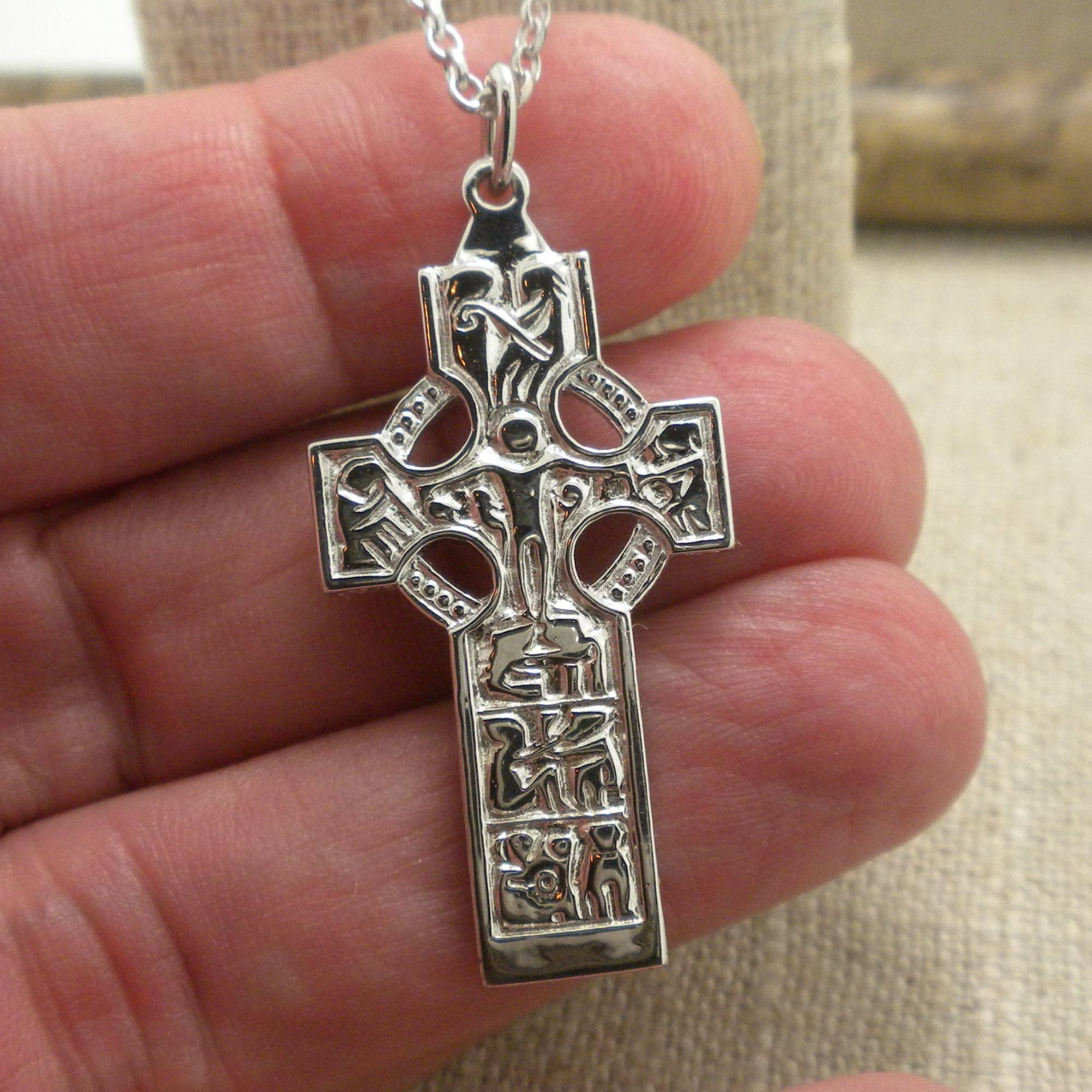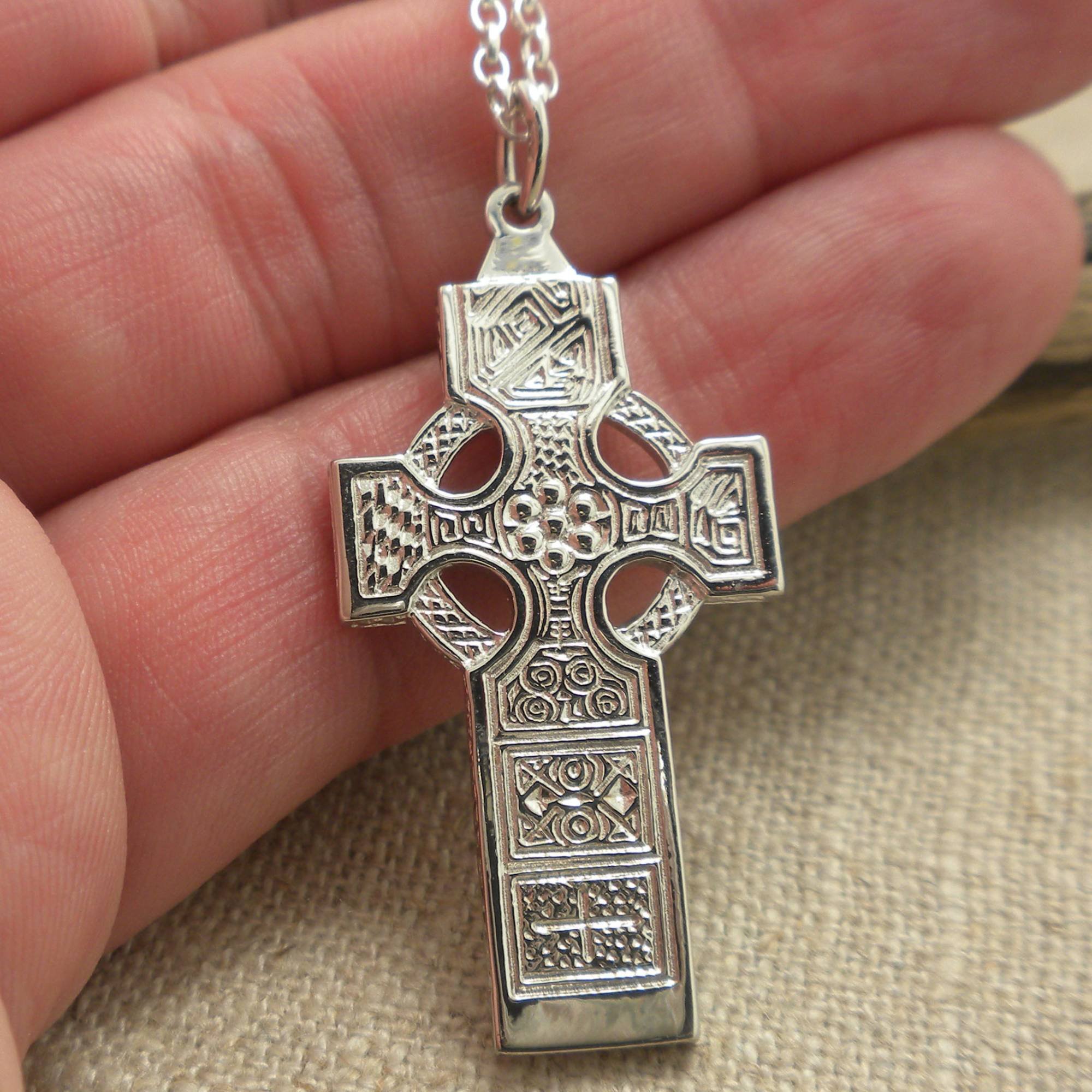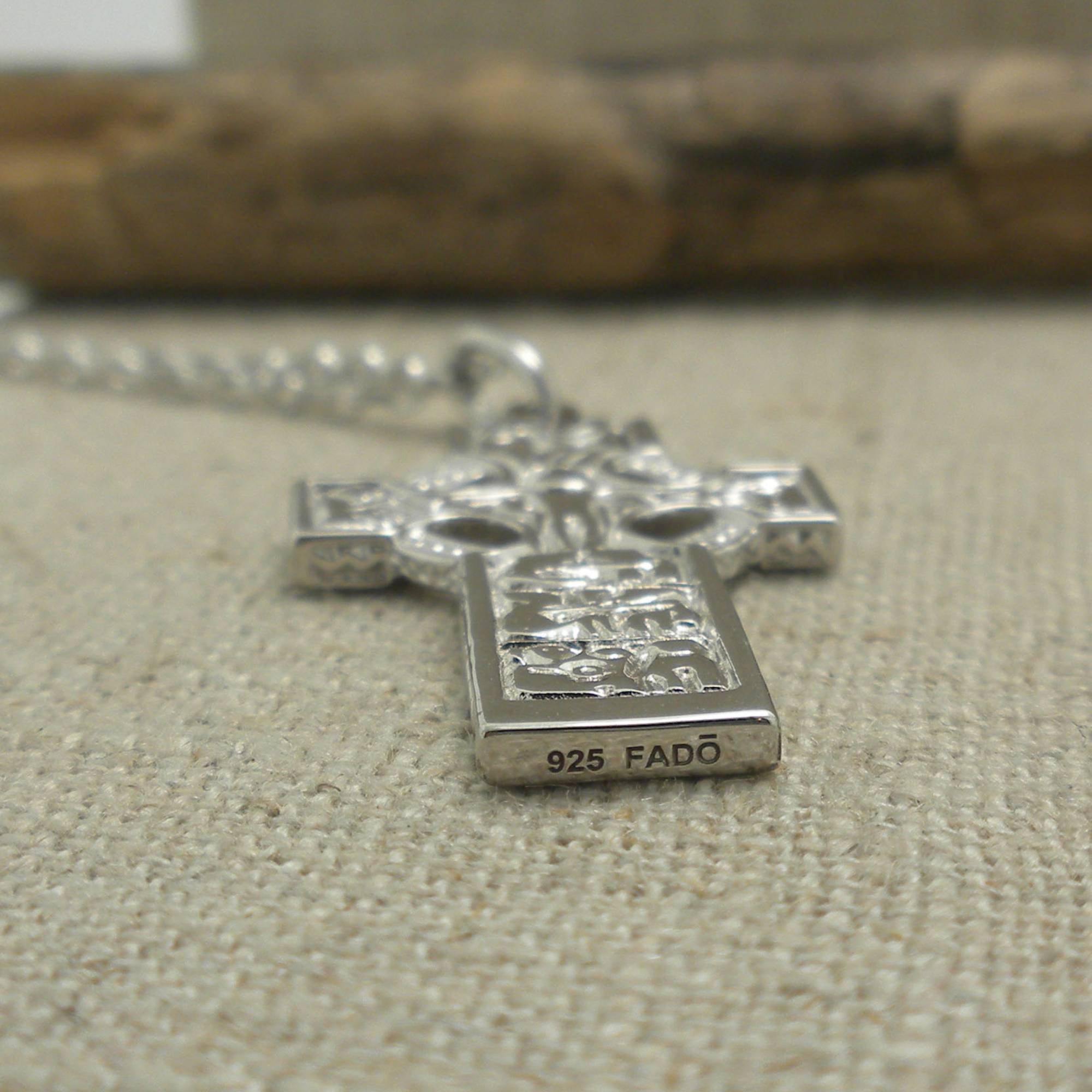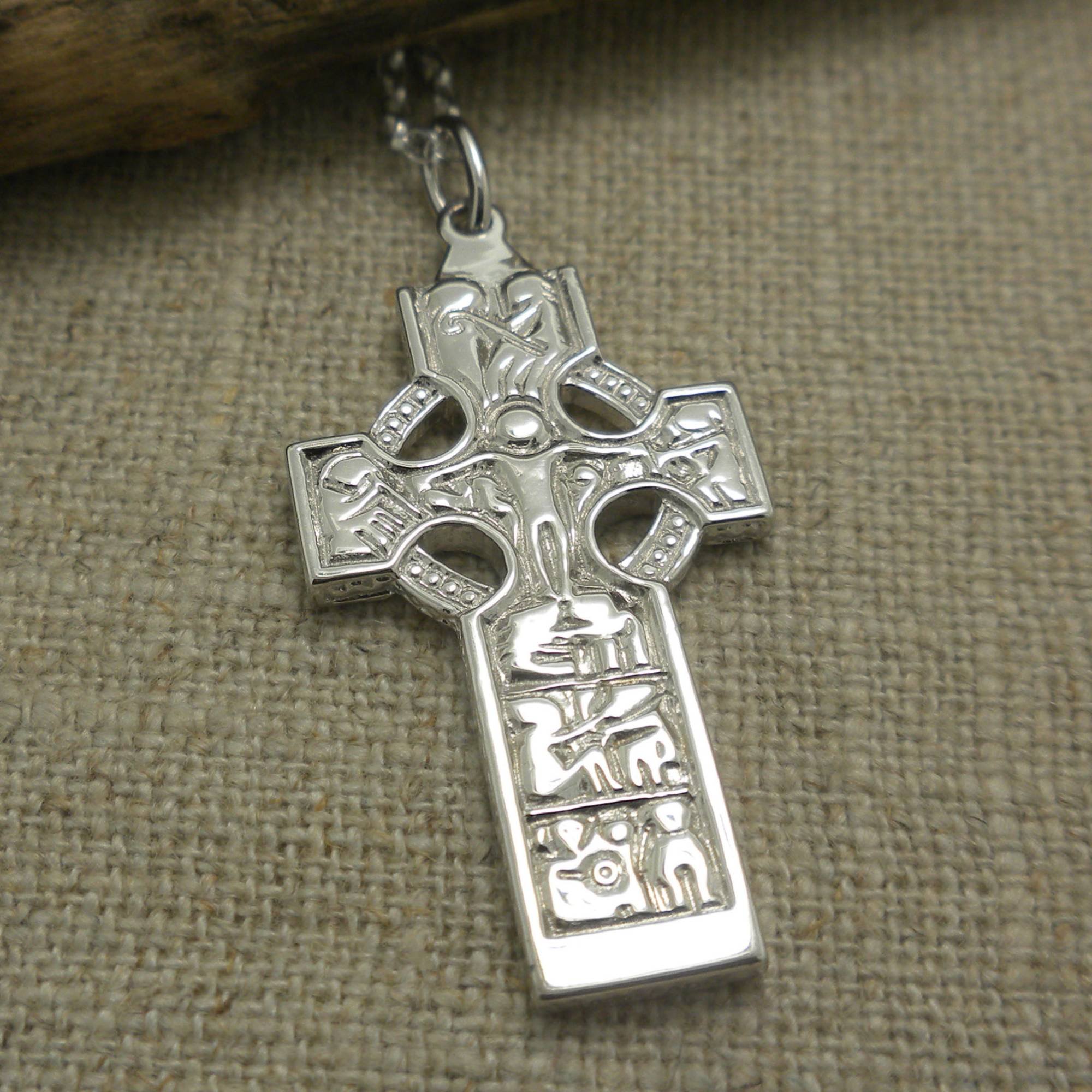Sterling Silver Celtic Cross of Duleek


Sterling Silver Celtic Cross of Duleek
Sterling Silver Duleek Celtic Cross Made in Ireland by FADO
Double Sided Sterling Silver Celtic Cross
1 1/2" long x 5/8"
Cross only 6.2 grams
Cross & Chain 8.8 grams
18" Sterling Silver chain
This attractive cross embodies the inspiration and spirit of the Great High Crosses of Ireland, carved and erected in the ninth and tenth centuries to celebrate learning and piety, great events and great men of their time.
Boxed for gift giving.
In Stock! Ships Immediately.
Celtic Cross made in Ireland by FADO
This Cross Ships for Free and is Returnable.
SKU: FD-XP56-SIL
Celtic Cross of Duleek
Duleek was an important ecclesiastical centre in the early Christian centuries and its Cross is unusual and very interesting. It was founded by St.Ciaran (or Kennean) who was himself baptized by St.Patrick in 472A.D. Here he built the first stone church recorded in Ireland. The name of the town comes from the Irish daimh liag, a house of stones. The center grew and flourished for more than 700 years and aerial photographs of the town show how the ecclesiastical boundaries still impose themselves on the street plan today.
Duleek became as important as Armagh, or Clonard or Clonmacnoise and included hospitals, almhouses and sanctuaries. It was a resting place for the bodies of Brian Boru and his son–in law where they lay in state on their way to burial in Armagh in 1014 after the battle of Clontarf. later an Augustinian priory was set up there by the O’Kelly family. When the Norman, Hugh de Lacy built himself a castle nearby, he granted the Church of St. Ciaran to the Augustinians of Gloucestershire in 1180. The Normans had themselves pillaged the Priory a few years earlier.
The unusual feature of the High Cross is that one face, the East face, is completely covered in Celtic curvilinear and geometric designs. At the bottom on the West face there is a scene with three figures which may be the holy family, or it may be the presentation of our Lord in the Temple. Above are two panels each with two figures facing, one with hands clasped, one with hands raised, at the center is a Crucifixion scene and at the top of the cross a scene from the story of the monastery. The story tells how St. Adamnon visited the tomb of St. Ciaran where his body layed undisturbed. St. Adamnon broke the rule and touched the body whereupon his eye was struck out. Later as he fasted as a penance his eye was miraculously restored.
The top panel shows the restoration. On the East face there appears to be a symbolic vine, while the center shows a design with seven bosses.
Early Irish artists constructed everything with meaning and exactitude (Hilary Richardson, 1984). They adopted the designs of the Celts and developed a new symbolic language using design and the symbolism of numbers to convey the Christian message.



